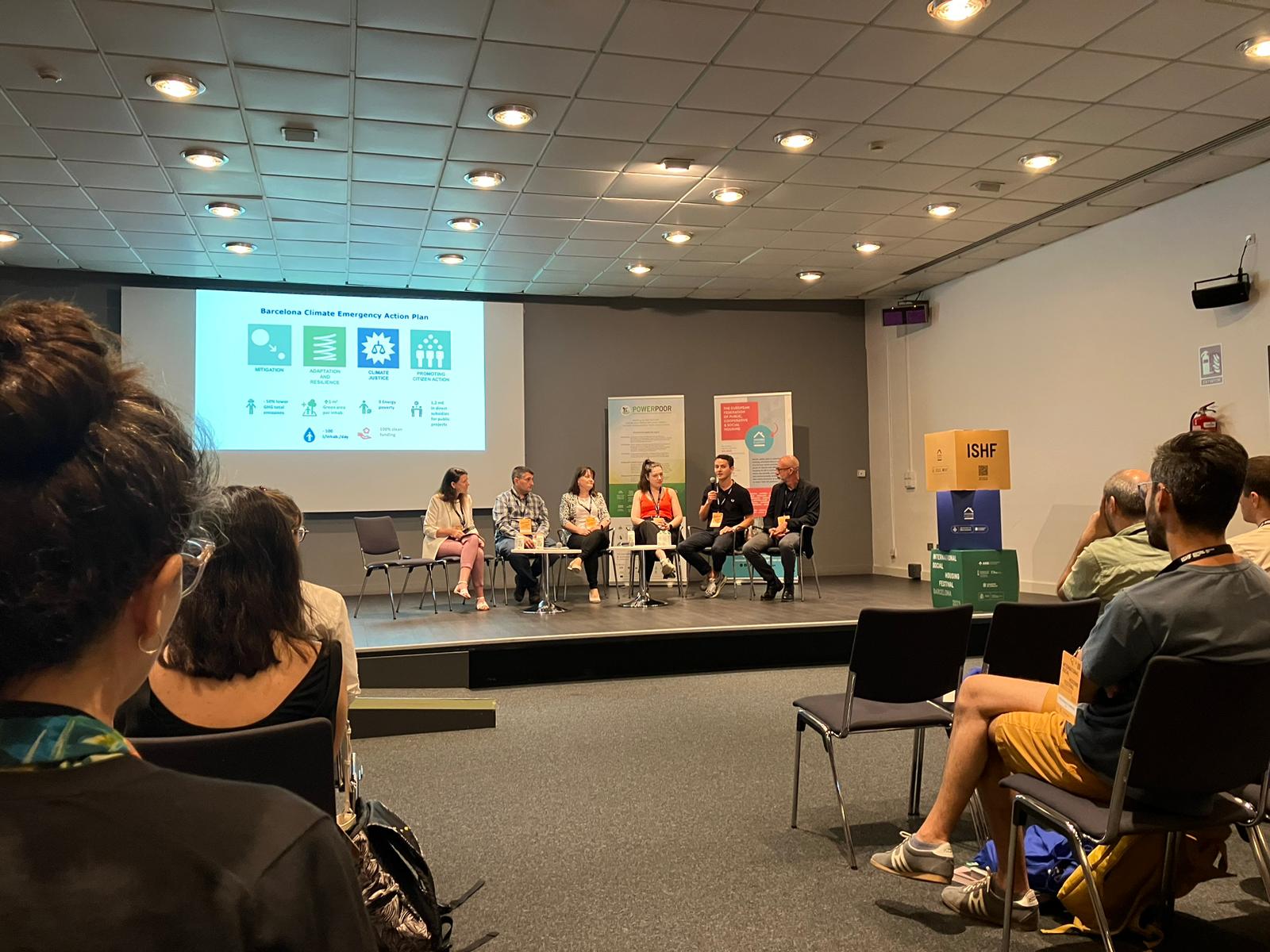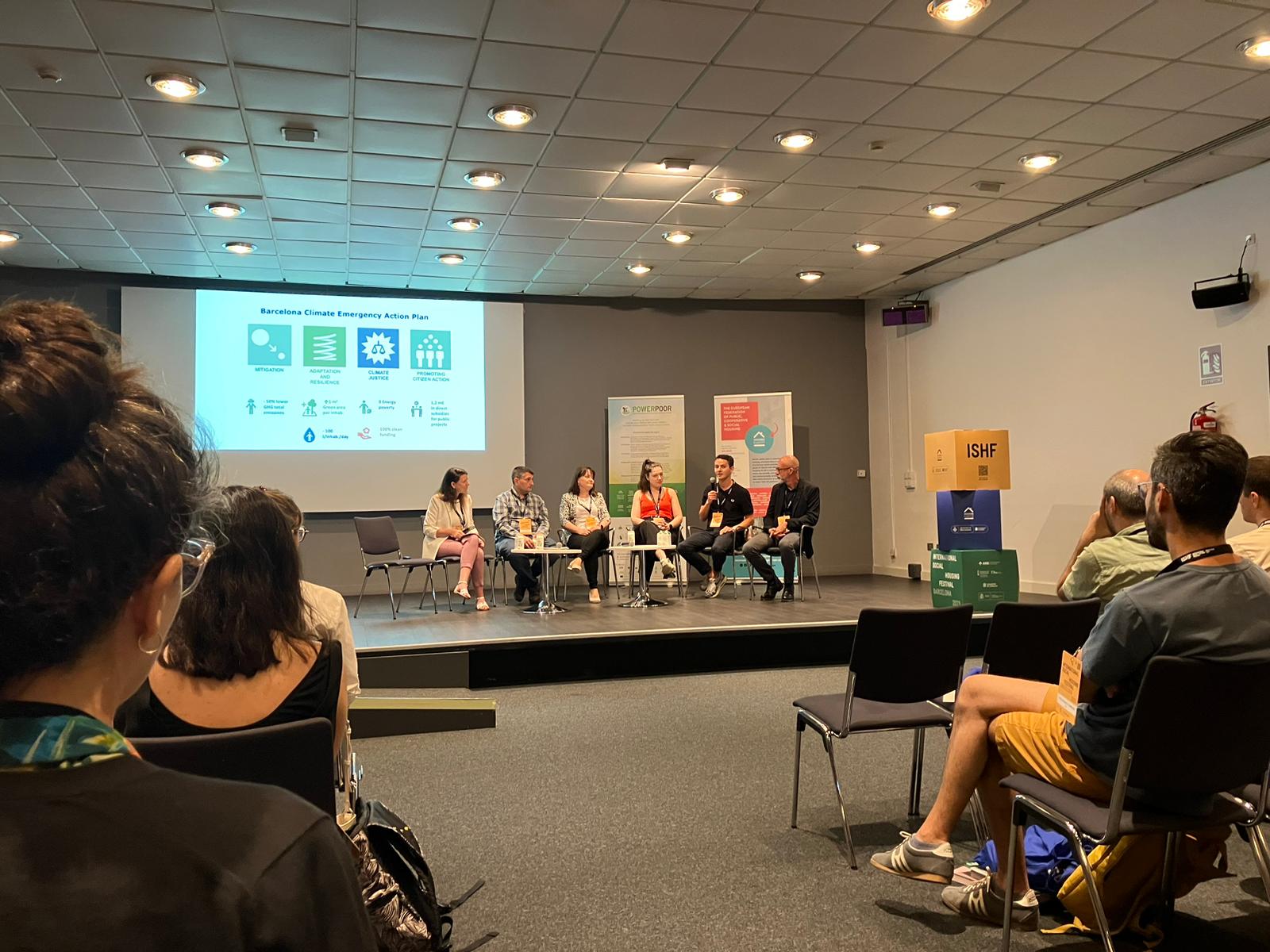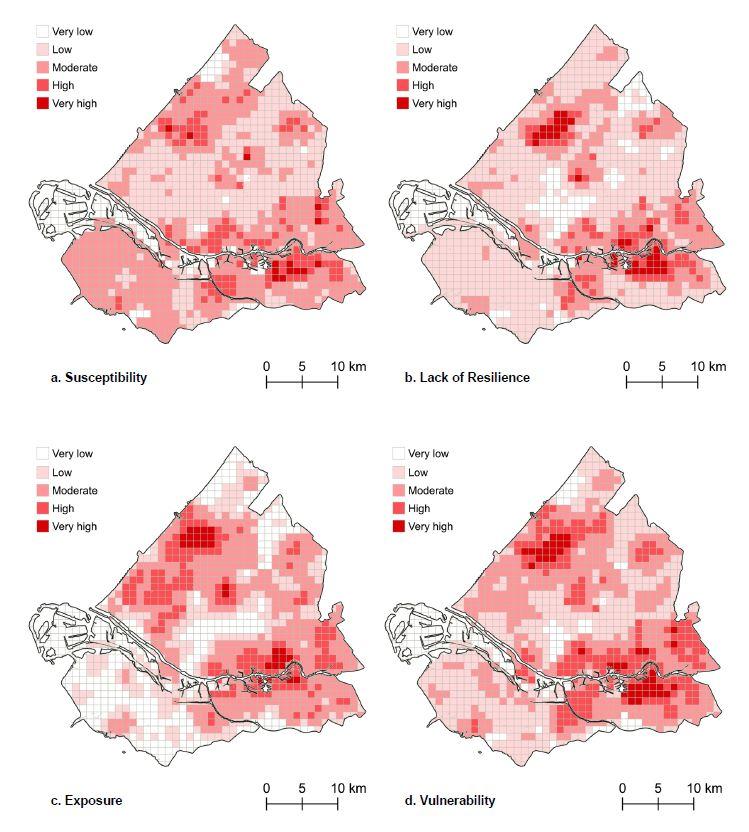Summer in the City
Posted on 13-06-2023
Last week I had the pleasure of attending the International Social Housing Festival (ISHF) in Barcelona alongside fellow network members and 2,000 (!) other participants. The event encompassed a remarkable week filled with seminars, keynote addresses, and informal discussions centred around the core themes of RE-DWELL: housing affordability and energy renovation. I would like to dedicate this blog to a particular question posed during a panel discussion I took part in, which explored the intersection between alleviating energy poverty and mitigating heat stress, as it truly sparked some thinking.
On the final day of the conference, a warm Friday on June 9th, I had the privilege of participating in an event organized by Diana Yordanova from Housing Europe. The event, titled 'Working Formulas and Question Marks for Pathways Out of Energy Poverty,' kicked off with Alice Pittini, Housing Europe's research director, sharing insightful highlights from this year's State of Housing report. Additionally, a panel discussion on effective strategies for alleviating energy poverty took place, where I joined the stage alongside esteemed experts and practitioners such as Eleni Kanellou, Anu Sarnet, Sven Van Elst, and Sergi Delgado. During the event, I had the opportunity to present some of the findings from a collaborative research paper I am currently working on with Joris Hoekstra from TU Delft and Ute Dubois from ISG Paris. Our paper focuses on how social housing organisations can effectively reduce energy poverty among their tenants.
Then, moderator Diana, posed a twofold question: "What were the most efficient measures implemented by housing organisations to shield tenants from the energy crisis during the past winter? And as the hot months lie ahead, what should social housing organisations in countries like Spain, Portugal, and Greece keep in mind as they prepare to support tenants and residents in dealing with heat stress?"
Now, while I know that the energy poverty literature increasingly looks at the lack of insulation and appliances that prevent households from cooling their homes sufficiently in summer, most of the research (including my own) currently tends to focus on the inability to heat during cold winters. However, upon reflecting on these questions, I came to realise that many measures taken by housing providers to address energy poverty in winter months would also contribute to the prevention and mitigation of heat stress.
First and foremost, it is crucial to to identify those requiring urgent assistance, specifically the most vulnerable tenants. Having a clear understanding of where to concentrate efforts, particularly during periods of crisis, is vital for short-term interventions. In another enlightening session at the ISHF, focused on climate justice in the Mediterranean, I had the privilege of listening to Eleni Myrivili, the current Chief Heat Officer of the City of Athens. She eloquently elucidated how heat exacerbates inequalities and lays bare the disparities among various socio-economic groups. This resonates with our observations during the previous winter, as the brunt of these extreme weather events is borne by (largely the same) low-income households residing in energy-inefficient dwellings. Therefore, the initial step is to identify the most vulnerable tenants. Who are they? And where do they live?
Another interesting approach that emerged during the previous winter, particularly in the United Kingdom, was the establishment of warm hubs by social housing organisations and their charitable arms. Warm hubs are essentially community centres where individuals can gather, find comfort, receive blankets, access food, and, most importantly, avoid the need to excessively heat their homes and risk high energy bills. It requires little imagination to envision that warm hubs could serve as cool hubs during heatwaves, providing air-conditioned environments to those most susceptible to heat stress.
Hence, resident engagement represents a critical aspect for both cold winters and hot summers. When executed effectively, resident engagement can significantly reduce vulnerability and foster trust between landlords and tenants. Particularly after retrofitting measures, it is essential to educate and promote sustainable behaviours. New technologies can be challenging to comprehend, especially when individuals are already facing difficult circumstances or language barriers. Improving short-term resilience is thus facilitated by fostering engagement.
And finally, when considering long-term resilience in both winter and summer seasons, it is essential to address the most decisive solution: renovation. Particularly in Mediterranean regions, where extreme heat reaches unprecedented levels, the implementation of green roofs and facades becomes crucial to alleviate such conditions. Additionally, measures such as insulation and double glazing play a pivotal role in reducing vulnerability during both winter and summer months, and their implementation can be achieved within a relatively short timeframe. Therefore, accelerating Europe’s Renovation Wave should be an absolute priority.
This introspection has pushed me to expand my thinking beyond the confines of Western European countries and delve into the diverse contexts in which housing providers operate throughout Mediterranean Europe. Moreover, it has reminded me of my master's dissertation at King's College London, written during the strange (and hot) summer of 2020 amid the Covid-19 pandemic. In that research, I examined the vulnerability of residents in the Metropolitan Region Rotterdam The Hague to heat stress, considering numerous variables (find the output below). Perhaps it’s about time for me to revisit and re-evaluate this work once again!




